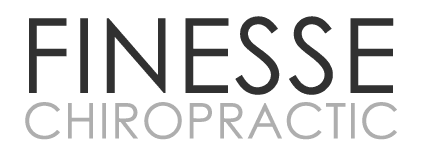Auto Injury in Lacey WA

The injuries sustained in an automobile accident in Lacey WA are very poorly understood by the average layman or patient. So, to most patients, it remains somewhat of a mysterious thing that only the doctor supposedly understands and the patient blindly trusts in the doctor to "take care of them", all the while having no idea of what is being done to or for them. Why is this the case? Is the mechanism of injury so difficult for the average person to understand? Personally, I don't think it is. And, as the saying goes, "knowledge is power". When a patient truly understands the nature of their injury (mechanism of injury), and how the chiropractic adjustment corrects the cause of their problem (injury), they are empowered with the knowledge to make better choices, and are more likely to stay with their care program until they reach pre-injury status, or their problem is fixed and stable, or as near normal as possible.
As in most areas of interest, there are books or articles on this subject titled "Auto Injuries for Dummies". This is NOT that article; for oftentimes, over-simplification leads to a lack of clarity and further confusion, or worse still, misinformation. So, I'm certain many people will not take the time to read this entire article. But for those who do, I'm also quite certain that you will come away from reading this feeling quite enlightened and empowered with this knowledge.
Understanding Your Pain After An Auto Accident in Lacey WA
Before we get into the mechanism of injury, there are a few concepts that need to be defined and understood. The first of these is the concept of "pain versus problem". A great analogy is found in dentistry. When a person is convinced (usually by themselves) that "no pain equals no problem", they will often put off getting regular checkups. Then one day, perhaps even years since their last dental visit, they wake up with their tooth throbbing with pain. They call the dentist, schedule an emergency visit, and find out that the cavity causing the pain is very deep and advanced, and that a root canal will need to be done; for the tooth is beyond repair. A person could say, "how can the problem be so advanced when the pain just started yesterday?". Clearly the problem-cavity (tooth decay) --has been present for quite some time. The same is true with chiropractic, and so next, we will address the nature of the problem being treated in chiropractic offices in Lacey.
Is it a misalignment (or bone out of place)? Ninety five percent of chiropractors will say it is; and yet, none of the research supports the misalignment/bone out of place paradigm. ALL of the research supports the joint dysfunction paradigm. I know this is getting complicated, but stay with me, because understanding these contrasting definitions and paradigms is critical in ensuring that you are getting the best care possible. Consider the spinal column. If perfect alignment was so important, God would have created one solid column all the way from your cranium (skull) down to your pelvis-then you'd always have perfect alignment. But guess what? Then you'd have zero mobility and would walk like a duck or penguin-at best. God generously gave us 24 bones in our spine so that we would have a much greater range of motion, or mobility, allowing us to move through a tremendous range of motion, and performing all kinds of acrobatic movements in our daily activities that we take for granted. One of the primary functions of the spine then is to move. Two spinal vertebrae form a joint, with motion between them. And so, the function of a joint is to allow for movement to occur between two or more bones. Joint dysfunction then, is a joint that has lost its full and free range of motion. What causes joint dysfunction, you may ask? Joint dysfunction is caused by two things: trauma and chronic strain. Trauma, such as a car accident, causes certain muscles to go into reflexive muscle spasm, to guard and protect the area from further injury. This muscle spasm causes the joints (they are attached to) to "lock up", and lose their normal range of motion. Similarly, chronic strain, such as sitting in front of a computer all day, or doing a lot of bending and lifting, stresses the area out as well, causing the reflexive muscle spasm and "locking the joint up" (joint dysfunction).
Joint dysfunction then causes two things:
- It causes pressure and stress on soft tissues-including muscles, ligaments, discs, and even nerves. The pressure and stress (irritation) on spinal nerves is typically what causes the pain that you feel. A caveat to this is that because only 15% of your nervous system is for sensing pain, you can have pressure on a nerve and not even know it. Meanwhile, the organ, gland, or muscle, etc. that is being supplied by that nerve is not getting the full nerve flow going to it because of the nerve pressure (or nerve interference). And thus, that muscle, organ, or whichever cell that nerve is going to will not function at 100%, resulting in poor health.
- The second thing joint dysfunction causes--amazingly unknown to the average person, even most chiropractic patients-is spinal degeneration. Research shows that when a joint is immobilized or loses its normal range of motion, that joint will start to degenerate within 2 weeks, and often within 2-3 days. A perfect example of this is in the 1970's and 80's, when people got into car accidents, their doctor often put a soft, white cervical collar on them. You'd see people wearing it everywhere. These days, you never see it. Why? Because chiropractors and even medical doctors realized through the research that doing so causes spinal degeneration to occur. Whether it's a cervical collar or the body's own defensive mechanism causing the joint to "lock up", that immobilized joint will begin to degenerate. This degeneration starts off with the body laying scar tissue down in the muscles and ligaments, and eventually laying calcium down in the joint, all the while causing the disc to diminish in height and lose its water content and become brittle and fragmented. As the joint degenerates, it becomes even more immobilized, and joint dysfunction worsens. It's a vicious cycle because as the joint dysfunction worsens (mobility decreases), more stress is caused on soft tissue, including nerves. Thus, further joint dysfunction causes further nervous system dysfunction. This is the reason the pain from auto injuries may be minimal soon after the injury, but then worsens (increases) as weeks and months go by.
Okay, if you're still with me, congratulations! Now we can get into the mechanism of injury. There are many names or terms used to describe injuries from car accidents, including whiplash injury, acceleration/deceleration injury, and soft tissue injury. Acceleration/deceleration and "whiplash" both describe the same mechanism, as the head and neck snaps first in one direction, and then in the opposite direction. A soft tissue injury describes the primary tissue of injury. By the way, medical doctors generally do not give much credence to soft tissue injury. They are looking for more "serious" injuries, such as fractures and possibly herniated discs. But outside of the above-fractures and herniated discs-they might say you're just fine; and send you away with anti-inflammatories and muscle relaxants, which do nothing to fix the cause of the problem and give you temporary relief at best.
Injuries from car accidents in Lacey primarily affect the neck the most, since the middle and lower back are restrained by the seat belt. When a car is hit from behind, it creates an acceleration/deceleration injury, as the occupant's vehicle is first accelerated forward, the occupant's head "snaps" backwards, followed a split second later by a deceleration-as the vehicle comes to an abrupt stop-and the occupant's head and neck snaps forward.
When a vehicle hits another vehicle from behind, the opposite occurs. First, as the occupant's vehicle comes to an abrupt stop (deceleration), their unrestrained head and neck snaps forward, and then snaps backward a split second later. Basically, the acceleration/deceleration injury describes what happens to the unrestrained head and neck-whipping the head and neck forward and then backward, or vice versa (whiplash)-as the vehicle either comes to an abrupt stop (hits another vehicle at a standstill), or is abruptly accelerated when it is hit from behind.
As the occupant's head is snapped forward, the front of the disc is compressed and the muscles and ligaments on the back of the neck are stretched and torn. A split second later, as their head snaps backward, the back of the disc is compressed, and the muscles and ligaments on the front of their neck are stretched and torn. Thus, the term "soft tissue injury".
The stretching and tearing of soft tissue-muscles, ligaments and discs-creates a general hypermobility, or excessive movement of the spine. Keep in mind that the job of ligaments is to keep joints from moving too much. A good example is the knee joint. When a football player tears their ACL (anterior cruciate ligament), they're out for the season, and surgery is required to stabilize the knee joint. The hypermobility created in the neck produces ongoing further stress on soft tissues, including on the nervous system. Additionally, remember that other joints are locking up through reflexive muscle spasm. The combination of hypermobile and hypomobile joints--joint dysfunction--creates a tremendous stress and strain on soft tissues, and especially on the nervous system.
Now that we've identified joint dysfunction-a combination of hypermobile and hypomobile joints--as the root cause of the problem, what do you suppose the most beneficial therapeutic goal would be? It would be to normalize joint function, or in other words, to restore motion to hypomobile-less than normal motion-joints through a spinal adjustment. As hypomobile joints improve in mobility, it allows the hypermobile joints to heal correctly and more quickly. Finesse Chiropractic explains that the chiropractor's job then, is to locate and correct joint dysfunction (hypomobile joints) through spinal adjustments. In other words, the purpose of the chiropractic adjustment is to restore motion to a joint that has lost its normal motion. As spinal motion normalizes, pressure comes off the nervous system (and soft tissues in general), and the body begins to heal.
There are so many options for care with auto injuries that it can be a bit confusing trying to decide which way to go, so I want to take some time to explain different treatment approaches and how well they work in correcting the cause of the problem. First, there's the medical doctor, who as I've said earlier generally does not recognize soft tissue injuries. Generally, their approach is to just treat the symptoms of pain and inflammation--with pain killers, muscle relaxants, and anti-inflammatory drugs-which do absolutely nothing to correct the cause of the problem-joint dysfunction. When that fails, as it almost always does, they'll send you to physical therapy. The physical therapist's approach is to (1) decrease inflammation through ice, moist hot packs, ultrasound and nerve and muscle stimulation; and (2) improve and increase range of motion through stretching and strengthening exercises. The problem with number (2) is that trying to improve range of motion through stretching often will aggravate the problem because the joint dysfunction-specifically the hypomobile joint(s)-does not allow the greater motion being asked of it, and so the hypermobile joints get even more stressed out as they are forced to be put through a greater range of motion that they are capable of delivering. Attempting to strengthen "weak" muscles likewise is counterproductive because the muscles are following the dictates of the nerves. They are often weak because of decreased nerve flow caused by joint dysfunction, and so exercising them is asking more of them than they can deliver, thereby aggravating and making the condition worse. After physical therapy fails and perhaps the patient is now in severe and intractable pain, surgery is the final option in the medical route. The irony is that rather than correcting joint dysfunction, surgery causes more of it by fusing "poorly behaving" joints; thus, permanently making the condition worse.
Massage therapy can help reduce muscle spasm and decrease inflammation and pain, especially in conjunction with chiropractic care. But by itself, it does nothing to correct the joint dysfunction, which is the root of the problem.
Finally, I want to make the distinction between a chiropractor in Lacey treating to correct misalignment versus a chiropractor treating to correct joint dysfunction. The simple reason is that a bone or joint that appears misaligned on x-ray or by static palpation is often the area of compensating joint hypermobility. Adjusting the hypermobile joint then, not only doesn't improve the situation, but will more likely aggravate it by putting motion into a joint that's already stressed out in moving too much. Diagnosing and treating to correct joint dysfunction (the hypomobile joint) on the other hand, nearly always ensures that the doctor is adjusting the correct area. Just as in real estate, location is everything!
Call Finesse Chiropractic today to schedule an appointment with our outstanding team.
OFFICE HOURS
Monday
8:30am - 11:30am
2:30pm - 6:00pm
Tuesday
Closed
Wednesday
8:30am - 11:30am
2:30pm - 6:00pm
Thursday
2:30pm - 6:00pm
Friday
8:30am - 11:30am
Saturday & Sunday
Closed
Finesse Chiropractic
5401 Corporate Center Loop SE Suite R
Lacey, WA 98503
F: (360) 972-2096

